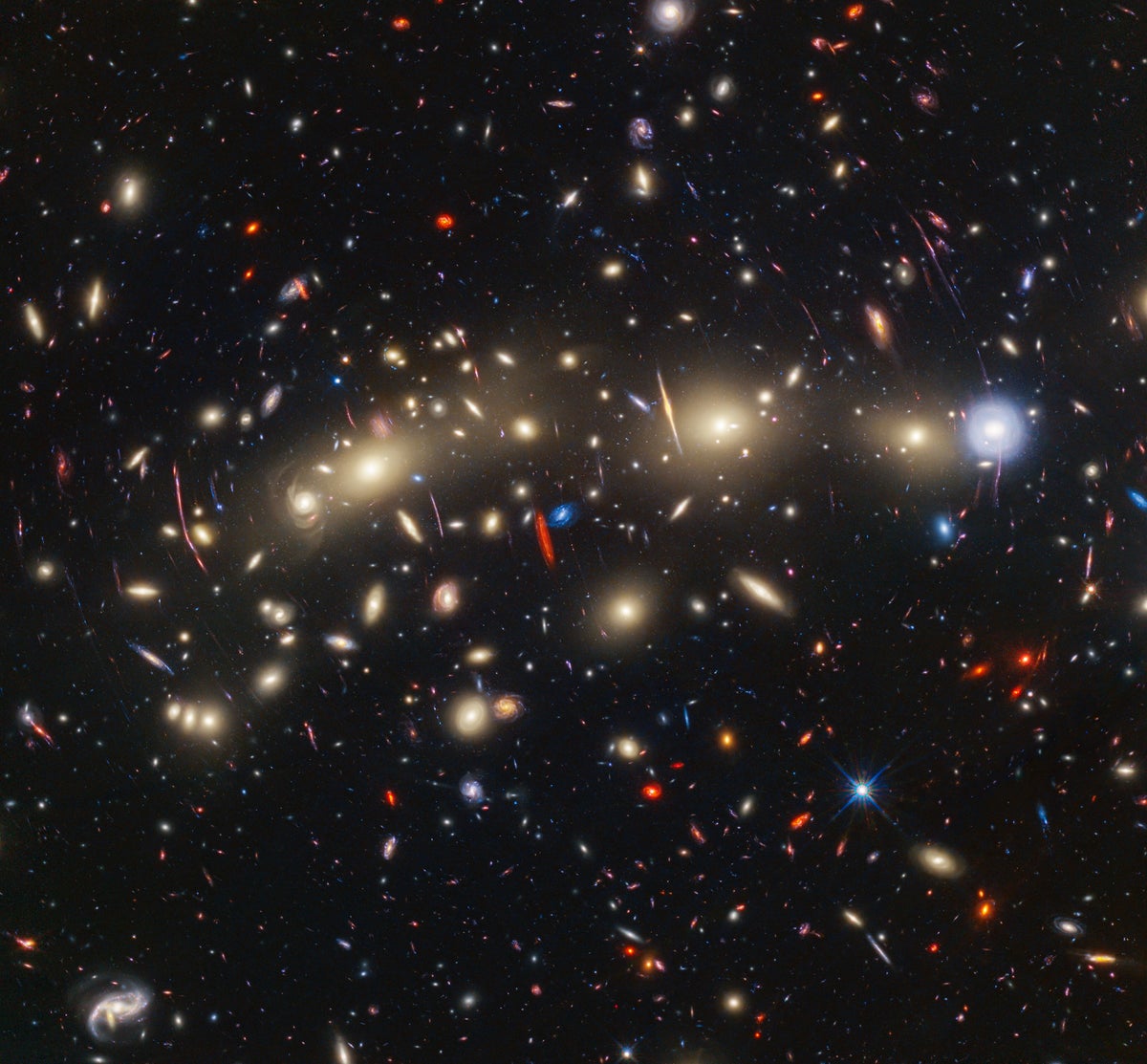
"Astronomers studying a distant galaxy using the James Webb Space Telescope (JWST) have found the best candidates yet for the universe's first stars. These so-called Population III stars arose shortly after the big bang and formed from the primordial hydrogen and helium that then pervaded the universe. Shining brilliantly but briefly, they would have ended their lives in explosive supernovas that forged and scattered heavier elements, enriching the cosmos with material for subsequent stellar generations."
"The latest candidates reside in a galaxy called LAP1-B, which is located more than 13 billion light-years away. A larger, intervening galaxy cluster that is closer to us acts as a giant magnifying lens for LAP1-B's faint, distant light. Looking at that light, astronomers found clear evidence of helium in LAP1-Bbut virtually no heavier elements, as would be expected from an early galaxy filled with Population III stars."
JWST observations identified strong helium signatures and a near absence of heavier elements in the galaxy LAP1-B, making it the best candidate yet for Population III stars. Population III stars formed soon after the big bang from primordial hydrogen and helium, shone brightly but briefly, and seeded later generations by exploding as supernovas that forged heavier elements. LAP1-B lies more than 13 billion light-years away and is magnified by a nearer galaxy cluster acting as a gravitational lens. The findings remain unconfirmed, but they represent the closest approach so far to locating the universe's most ancient stellar population.
Read at www.scientificamerican.com
Unable to calculate read time
Collection
[
|
...
]